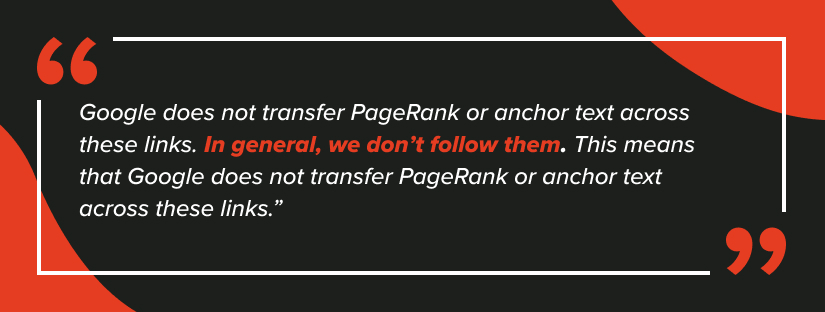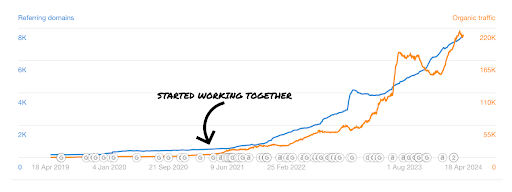The Power of NoFollow: Why You Shouldn’t Be Ignoring The Impact Of NoFollow Links
By Amy Irvine
June 27, 2024 • 12 min read

“We only want followed links?” I can hear the sound of digital PRs screaming everywhere when a client tells them they are only interested in follow links.
We know as digital PRs how important it is to have a natural backlink profile, but we often find ourselves having to explain the benefits of a nofollow link (time and time again…).
In my opinion, nofollow links are one of the most misunderstood things when people are looking to invest in digital PR. I’ve lost count of how many conversations I’ve had with SEOs on the value of nofollow links, as many people think they are useless.
Spoiler alert – this isn’t true.
In this blog post, I’ll explain follow and nofollow links, challenge the stigma around nofollow links, demonstrate why we should value them, and show you cases where nofollow links have impacted search rankings and traffic.
What are follow links?
A followed (sometimes referred to as ‘dofollow,’ but that’s not actually a thing) link is a backlink without any special attributes. It is the holy grail of links in digital PR as the link passes authority (PageRank) to the page it is linking to.
Here is an example of a recent follow link in HTML code that we earned for GO Outdoors on the Huffington Post.
You can see from the code that the link has no attributes, which means it is followed.

What are nofollow links?
Nofollow links are a type of backlink with a rel=”nofollow” HTML tag. A lot of SEOs believe nofollow links don’t directly pass any authority (Page Rank) through to the page they are linking to.
However, I believe they still hold SEO value and can impact rankings. A few years ago Google announced that they were treating nofollow links as a ‘hint’ not a directive, which means they could ignore the nofollow attribute and the recent Google data leak confirms this further (more on this later).
Here is another example of a link we secured for GO Outdoors on the Daily Record. This time, the example is a nofollow link, and you can see the HTML code below.

We know this link is nofollow, as we can see in the HTML code the rel=”nofollow” tag.
To check if a link is followed or nofollow, right-click on the anchor text and click “Inspect,” which brings up the HTML code.

If you’re uncomfortable with HTML code, use third-party tools such as Moz or the nofollow Chrome extension.
What is the difference between follow and nofollow links?
The main difference between nofollow and follow links is the amount of SEO value they provide. This SEO value, in technical terms, is PageRank; Google’s link-based measure of a website’s importance of authority.
We know that followed links influence search rankings and pass link equity to the page they link to, whereas it’s widely debated what value (if any) a nofollow link holds in terms of SEO.
Do nofollow links have any value? What does Google say?

“Google does not transfer PageRank or anchor text across these links. In general, we don’t follow them. This means that Google does not transfer PageRank or anchor text across these links.”
This means that Google doesn’t always ignore nofollow links.
And in 2020, Google announced that they were treating the nofollow tag as a hint, not a directive. This means that Google can ignore the nofollow and pass authority from the nofollow link to your site.
I believe that nofollow links positively impact your SEO performance. Google has said they sometimes ignore the nofollow tag, and if this is the case, then it will impact your SEO performance and pass PageRank
And even if Google isn’t following the link, then there are a number of other benefits that nofollow links can have on your business, both from SEO and wider business perspectives.
What does the recent Google leak documentation tell us about nofollow?
Nofollow links from high-quality tiers are likely passing value.
One of the things that emerged from the recent Google leak documentation is that Google has three indexing tiers (high, medium, and low) which links are categorised into.
This is based on a number of factors including click data, suggesting that Google is using click data to define which indexing tier a page sits within, with traffic data having the potential to move it into the higher tiers.
The documentation also said that fresh content can also move the linking page into that high quality tier.
This means that we could have a nofollow link on a high-quality and high-traffic news publication which Google would categorise straight into the ‘high quality’ tier, meaning the link could effectively pass PageRank or have SEO value. This is something that came out of Rand Fishkin’s initial leak write-up.
On the flip side, we could have a followed link but on a lower tier site which is moved into the ‘low quality’ sites and doesn’t pass any value and actually Google ignores that link.
This backs up why it’s so important to still earn nofollow links through your digital PR strategy.
It’s time to stop caring if a link is followed or nofollow now that there is so much evidence that other signals are overriding the nofollow tag when this deserves to happen.
You should be more focused on where those links are coming from and the quality (traffic) of those sites, the relevancy of the publication to you as a brand and the relevancy of the story to you as a brand.
Why do SEOs have such a strong opinion on nofollow links?
In 2005, Google introduced nofollow links to combat spammy link building (eg posting in forums to secure follow links), and the nofollow tag quickly became Google’s recommended tag for paid links.
This is where nofollow links got their bad reputation and the opinion “nofollow links have no value” came from. I’ve spoken to countless SEOs who are so adamant that they don’t want nofollow links as they are a “waste of time”.
Many newspapers and online websites don’t understand the difference between nofollow and followed links, and they blanket nofollow all external links because they are afraid Google will penalise them for linking out. This, however, isn’t the case. The only instance when Google may penalise for linking out is when this is clearly sponsored or paid-for links on a page. Typically, news publications have nothing to worry about here.
5 benefits of nofollow links

- Help diversify your link profile
If a website only has 100% followed links, this appears unnatural and is a major red flag for search engines and a big indicator that a site is manipulating its backlink profile and paying for links. Paying for links is against Google’s guidelines, and you will be penalised if caught. No one should be buying links (and if you are, you need to reinvest that budget into digital PR immediately).
Nofollow links are important for SEO as you must have a healthy mix of follow and nofollow. Search engines want you to have a natural and diverse backlink profile, so even if you’re not getting that direct authority from a nofollow link, you are still building a diverse portfolio of backlinks.
- Builds brand awareness
Nofollow links are amazing for building brand awareness, getting you in front of your target customer, and positioning you as an expert in your field.
Would you turn down a link from The Guardian because it’s nofollow? Would you turn down a nofollow link from the New York Times? A lot of top-tier publications only offer nofollow links – if you just focus on follow links, you start to lose out on a huge proportion of the media landscape.
Not only that, but if your competitors are executing a solid digital PR strategy, they will earn links (follow and nofollow) from a range of publications. You will miss out on opportunities in the press, and your competitors will sweep them up. This will also result in a larger link gap between you and your competitors.
- Building trust and authority signals
Through a digital PR strategy where you are earning, follow and nofollow links, you are building trust and authority signals for your website. Even brand mentions are helping to solidify your place in the market and position you as an expert.
Google’s algorithm isn’t just looking at follow links – it’s also looking at branded search, user behaviour and how many people are landing on your site, as well as engagement and citations.
- Demonstrates E-E-A-T
E-E-A-T should be an essential part of your SEO strategy and digital PR is one of the best ways to demonstrate this. Digital PR increases brand awareness, establishes your spokespeople as experts and drives branded search.
There are a number of ways you can demonstrate E-E-A-T through digital PR:
- Pitching out expert insight from your spokespeople
- Linking to author profile pages in pitches (and trying to get links into these pages)
- Consistently landing relevant coverage
- Pitching brand annoucements to industry titles
- Launching relevant hero campaigns
You will earn both follow and nofollow links by incorporating the above into your strategy, which will help strengthen your E-E-A-T signals.
Read more about this in our guide to the role of digital PR in demonstrating E-E-A-T.
- Increase referral traffic and drives sales
The end goal of a business isn’t to earn follow links. The end goal is to increase revenue – and the amount of traffic a link generates isn’t impacted with whether it is followed or nofollow. Nofollow links create traffic to your website, resulting in conversions, sales and revenue!
At Digitaloft, we earn both follow links and nofollow links for our clients, as it’s important to have a natural backlink profile. We have no control over whether a link is followed or nofollow, as publications often apply this policy sitewide.
When should you use nofollow links?

You should use the rel=”nofollow” attribute when you don’t want to be associated with a page or website. Historically, this was recommended when links were sponsored or coming from user generated content or, in other words, when the link had no editorial control given over it.

You need to make sure you apply the nofollow attribute on any sponsored/paid links and you should use rel=”sponsored”. For example, if you were displaying links on your website for ads you would need to mark them with the attribute so Google doesn’t pass any link equity.
Affiliate links are another time to use no follow links and you should also use the rel=”sponsored” attribute. While affiliate links don’t pass any link equity, they have many other important benefits, such as increasing referral traffic and driving sales.

You should also use nofollow links on user-generated content, and in this instance, you should use the rel=”ugc” attribute. User-generated content includes comments and forum discussions.
Please note, that both rel=”sponsored” attribute and rel=”ugc” are the same as adding rel=”nofollow” but Google has said it prefers you to be explicit about the type of link.
Here are some examples of sites seeing growth despite us earning a high percentage of nofollow links
25% increase in non-brand organic traffic and +1,998 top 3 rankings – and the majority of links earned were nofollow
Over the past 6 months for a client in the travel space, we’ve earned…

Despite the majority of links earned into the domain being nofollow, the site has seen a 25% increase in non-brand organic traffic and +1,998 top 3 rankings. This is a really great example of how a relatively high percentage of nofollow links still resulted in such massive growth.

We’ve worked with this brand since 2021 to build its brand in the travel space and we’ve supercharged its organic strategy through the power of Digital PR.
Earning regional links to accelerate localised keywords
It’s no secret in the world of digital PR that the majority of backlinks you earn from regional publications are nofollow.
We work with the security experts at GetLicensed, and one of their goals is to build up their regional presence. We made regional links a priority to help Get Licensed boost their rankings, and they now rank in position one for ‘sia training in Manchester’, ‘sia course Glasgow’, ‘sia training Birmingham’, and ‘sia course Leicester’.
The power of nofollow links: recap
If you just focus on earning follow links, you start to miss the bigger picture and miss out on a lot of opportunities for your website.
Your focus shouldn’t be if a link is followed or nofollow. You should be more focused on:
- Is the link and content relevant to our brand
- Would we want this link if Google didn’t exist
- Is the link getting us in front of our target audience
- Is the link positioning us as experts in our field and building topical authority
- Is the link driving traffic to our site
Your end goal isn’t to earn follow links; your end goal is to increase traffic and revenue as a business. Nofollow links can help you achieve that, alongside diversifying your link profile, building brand awareness, building trust and authority signals and demonstrating E-E-A-T.
The opinion that “nofollow” links are a waste of time because they don’t pass any “link juice” is outdated. It’s time for the industry to understand the power of nofollow.
If you want to learn more about digital PR you can read my blog post on ‘What Is Digital PR’ here.










